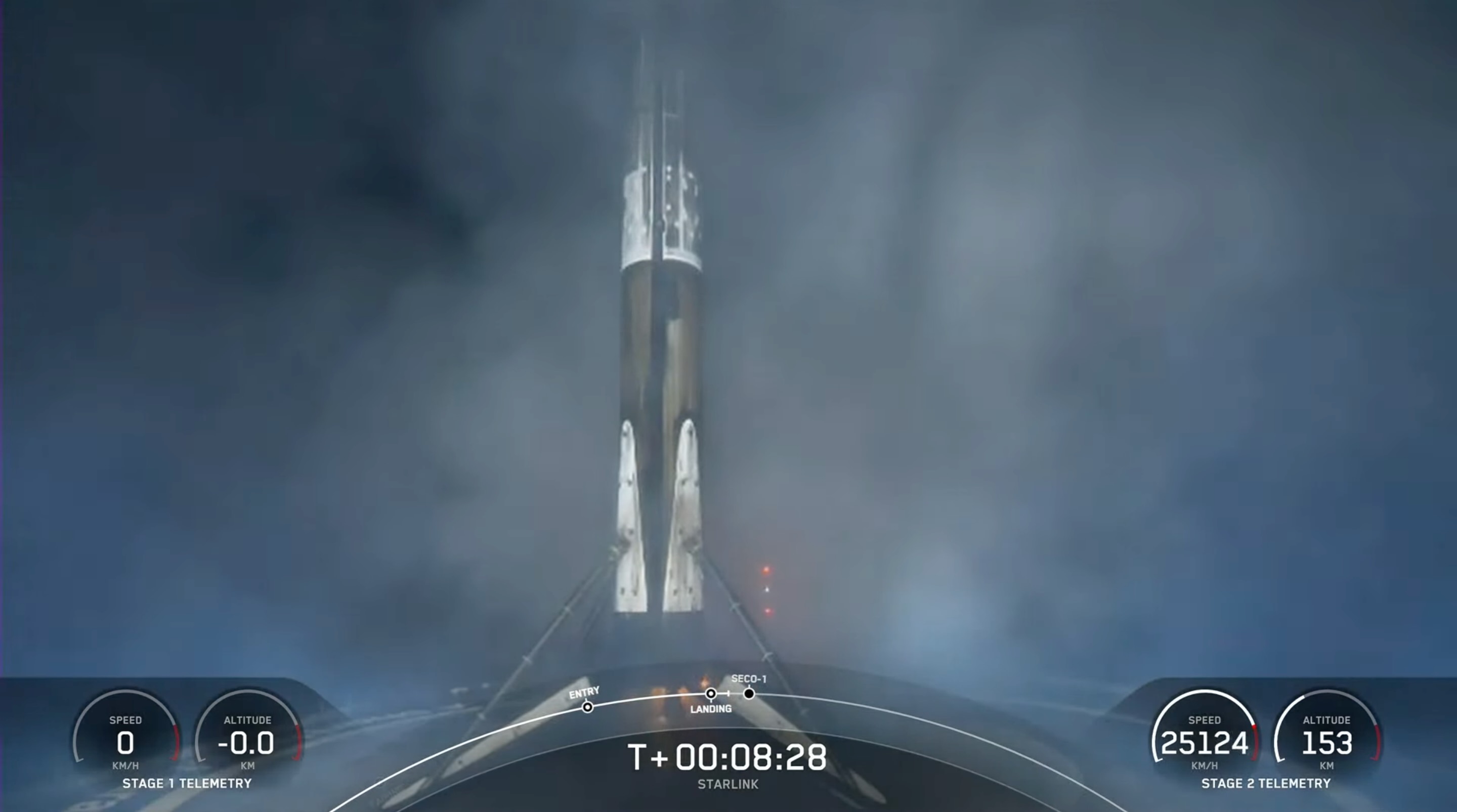SpaceX launches 56 Starlink satellites, lands rocket at sea
SpaceX launched another big batch of its Starlink internet satellites and landed the returning rocket at sea early Thursday morning (May 4).
A Falcon 9 rocket carrying 56 Starlink spacecraft lifted off from Florida's Cape Canaveral Space Force Station Thursday at 3:31 a.m. EDT (0731 GMT).
The Falcon 9's first stage came back to Earth about 8.5 minutes after liftoff, touching down on SpaceX's A Shortfall of Gravitas droneship, which was stationed in the Atlantic Ocean off the Florida coast.
Related: Starlink satellites: Everything you need to know
It was the seventh launch and landing for this particular booster, according to a SpaceX mission description.
The Falcon 9's upper stage continued powering its way upward Thursday. It will deploy the 56 Starlink satellites in low Earth orbit a little less than 65 minutes after liftoff, if all goes according to plan.
Starlink is SpaceX's huge and ever-growing constellation of broadband satellites. The company has now launched more than 4,300 Starlink spacecraft to date, the vast majority of which are currently functional, according to astrophysicist and satellite tracker Jonathan McDowell, who keeps tabs on such things.
Breaking space news, the latest updates on rocket launches, skywatching events and more!
Thursday's launch was the 29th orbital mission of the year for SpaceX and the 27th for a Falcon 9. The other two SpaceX orbital flights this year have involved the company's burly Falcon Heavy rocket.
The above numbers don't include SpaceX's highest-profile launch of the year — the April 20 test flight of Starship, the biggest and most powerful rocket ever built. That mission wasn't designed to reach orbit, and it didn't, ending with a commanded destruction of Starship about four minutes after liftoff.
Editor's note: This story was updated at 3:40 a.m. ET on May 4 with news of successful launch and rocket landing.
Mike Wall is the author of "Out There" (Grand Central Publishing, 2018; illustrated by Karl Tate), a book about the search for alien life. Follow him on Twitter @michaeldwall. Follow us @Spacedotcom, or on Facebook and Instagram.

Michael Wall is a Senior Space Writer with Space.com and joined the team in 2010. He primarily covers exoplanets, spaceflight and military space, but has been known to dabble in the space art beat. His book about the search for alien life, "Out There," was published on Nov. 13, 2018. Before becoming a science writer, Michael worked as a herpetologist and wildlife biologist. He has a Ph.D. in evolutionary biology from the University of Sydney, Australia, a bachelor's degree from the University of Arizona, and a graduate certificate in science writing from the University of California, Santa Cruz. To find out what his latest project is, you can follow Michael on Twitter.

